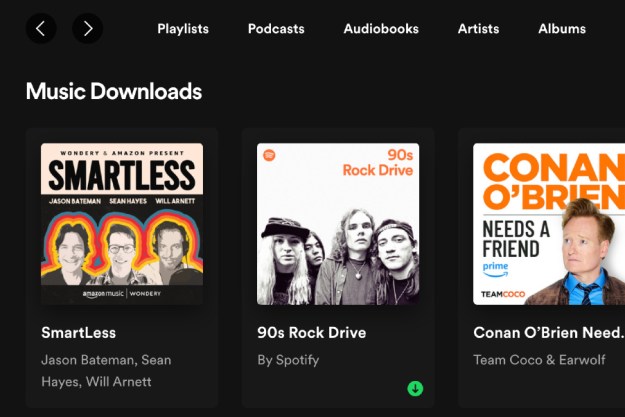
If there were one job description in rock and roll that comes with the most built-in pressure, it would have to be “lead guitarist for Steely Dan.”
During their 70s recording heyday, the ever-meticulous Dan duo of Walter Becker and Donald Fagen garnered top-drawer guitar solos from first-call session aces like Larry Carlton, Jeff “Skunk” Baxter, Denny Dias, Lee Ritenour, and Elliott Randall, to name but a few. Lesser ax bearers would buckle under the pressure to both recreate and expand upon such audiophile-approved aural templates, but not Jon Herington, who’s held the lead guitar chair with the mighty Dan on record and on tour since 1999.
“You can build on a piece of music like a painter adds to a canvas, and it evolves over time,” explains Herington. “It’s not like a Jackson Pollock painting where it happens in an instant. It’s put together, layered, and edited, and it evolves as you listen to it. Donald and Walter have high standards about musicality. They want things in time, they want things in tune, and they want things to sound great, but they don’t expect to be ‘remaking’ the records; they don’t want that.”
“Steely Dan almost never has a song that sounds like a jazz song.”
Herington can also be heard to full effect in glorious 5.1 on the DVD-Audio releases of Steely Dan’s early-aughts studio output, Two Against Nature (2000) and Everything Must Go (2003), both of which benefit from immersive surround mixes done by longtime SD producer Elliot Scheiner.
New Jersey native Herington has the chops to take these classic solos to a whole new level, whether it’s by adding texture to the tone on Hey Nineteen or adding blazing, virtuosic runs to Reelin’ in the Years. Herington, 60, recently took time out from the band’s Jamalot Ever After summer tour to talk with Digital Trends about blending genres to create new sounds, when and when not to improvise, and his Dan canon wish list. There’s no royal scam going on here — Herington’s masterful riffs are what make tonight a wonderful thing.
Digital Trends: Steely Dan have always had great soloists on record throughout the years, but to play this music live, you also have to have a strong sense of song structure and melody to pull everything off.
Jon Herington: You’re right. I’ve always been sort of astounded at how well Walter and Donald have this way of writing a tune and making room for a completely different composed section that will often basically accommodate the solo. I was brought up on The Beach Boys, The Beatles, and The Four Seasons — concise pop song structures were what really motivated me in my earliest days — and I still think that way when I’m writing my own material. I see the songs in a tight way like that. But those guys have this epic imagination, and it’s always been such a thrill to see and get to know up close, and be the guy who plays on all those sections. It’s pretty amazing.
Whenever I hear people say things like, “Steely Dan is just jazz” — they’re missing the point. These are guys who have created their own sound by drawing from a number of different sources.
It’s a completely unique hybrid. Obviously, there are different elements where there’s an emphasis on the improvisation, but mostly, there’s a jazz harmony that’s unique to the genre. It seems to me it’s mostly about a kind of rhythmic approach. Steely Dan almost never has a song that sounds like a jazz song. Maybe there’s one that sounds like a jazz waltz, like Your Gold Teeth [from 1973’s Countdown to Ecstasy] or something, which has kind of a 3/4 feel. But seldom do they ever do that. They may be borrowing from pop and R&B for their groove and rhythmic information. And with the guitar stuff, they’re almost never borrowing from a pure jazz tone. They’re almost always going for blues and rock guitar sounds. The way it’s informed by jazz is primarily from Donald’s interest in harmony, his knowledge of keyboard voicings, and things like that.

And, of course, the improvisation is a big part of it, and that language — certainly in the live band — has come to the forefront in a way that didn’t really happen on the records as much.
Are there any specific solos that stand out to you as your favorites from the original recorded canon?
Well, yeah, there’s so much great guitar work there. They hired so many amazing players, such a diverse bunch of guys who contributed to those records and made the music come alive in that way. But hands down, my favorite solo on any Steely Dan record is Larry Carlton’s Third World Man [the last track on 1980’s Gaucho]. Donald and Walter must have thought that was a great take, because originally, it wasn’t even on the song. It was done in an earlier recording session. And I think the only reason they kept it and tried to write a new lyric later that became Third World Man was because they loved that solo so much. I love that solo too. It’s one of the greatest pop guitar solos ever recorded. It’s so melodic, and the sound is fantastic. It has a great shape, the whole way it moves and climaxes.
When you play that solo live, it’s one of the few instances where you stay fairly close to the original.
“I’m trying to play it the way it was. It’s too good not to.”
That said, it is a highlight of each Steely Dan show to see what you’re going to do with the solo on each song, because you put such a different spin on each one.
Well, thank you. That’s been the challenge of this job. It’s different than playing with my own band, because the degree with which the audience knows this stuff and has expectations about it are powerful things. You can grant their expectations and fulfill their wishes, or you can kind of mess with them and frustrate them — tease them with some of the stuff they recognize, and then veer off. It’s kind of a wild thing. It’s a little daunting at times, really.
For me, it’s always been a question of how to balance what I love about the recording and stay within the parameters of what is going to make the song happen the way it happened on the record as much as I think is appropriate. There are some tunes that I don’t think it matters if I’m not referencing the original as much. They’re classics, and even if the guitar players improvised on the record, because we’ve heard them for so long and because Donald and Walter made such great choices about which takes they kept, it’s in everybody’s heads as if they were composed that way. Some of it you just don’t want to fail to play as is.
You do have to start with particular beds and melodies for songs like “Reelin’ in the Years,” but when you get into the middle section, you can really open it up. Otherwise, we might as well watch somebody put the needle down and watch the record spin.

Yeah. I can’t imagine the beginning of “Reelin’ in the Years” without that melody there, and the guitar having that kind of sound. As an audience member, I’d be disappointed — and that’s how I gauge it. If it feels right for me to play it, then I’m gonna yield to it.
On the other hand, I want it to be a fun, open, interesting kind of improvising experience for me too, because it’s too golden an opportunity for me to miss. I don’t want it to be just a whole night of being like a tribute to the original recording. That would feel wrong for the sensibilities of the guys I’m working for.
And it’s tricky to find the line there. I try to go easy on myself and realize that a song or solo can change, and I can allow my feelings about it to change over the course of a tour. If it feels like it’s getting stale because I’m quoting the original too much, I reserve the right to change it up and try a different approach.
It’s happened the other way, too. At the beginning of a tour, there might be something that isn’t scripted at all. It’s totally improvised, and then, day after day, a certain shape comes out, and I’m slowly composing my favorite way of going through it. It takes on a more fixed identity as the tour goes on, and I think that’s OK. My measure of it is, “Does it feel fresh?” I let how compelling it is decide if I shift gears with it as the tour goes on. It’s sort of cool to have all that room to play.
“I don’t want it to be just a whole night of being like a tribute to the original recording.”
There are a bunch of tunes that have always been my Steely Dan favorites that are usually from older records, and they have a more restrained vibe — they’re quieter, shorter. I’m thinking of songs like Pearl of the Quarter [from 1973’s Countdown to Ecstasy], Bad Sneakers [from 1975’s Katy Lied], and Any Major Dude Will Tell You [from 1974’s Pretzel Logic]. Actually, Rikki Don’t Lose That Number [also from Pretzel Logic] feels like that too, in a way. It’s not a heavy song — there’s a restraint in the rhythm section and with the volume people are playing at. These are really concise but beautifully crafted little pop songs. They’re real gems. I think it would be great to do them because they’re fantastic songs, and they’re really to my taste. They’re so beautiful. But I’m not the boss. (laughs)
I also like when Steely Dan does full album nights like you’ve done in the past with The Royal Scam and Aja. Although it would be pretty cool to see Donald’s The Nightfly [his 1982 solo album] done in full as well.
We did that once, in ’06. That was so much fun. We ended up leaning toward Nightfly material as the centerpiece of the whole night. What a great bunch of songs on that record.
The Nightfly has one of my favorite album covers, too: Donald as a DJ, with a big microphone in front of him, cigarette in his hand, and a record spinning on the turntable in the radio station studio.
I’d love to see Donald do a show like that, one where he sits behind a turntable. Make a stage set that looks like that album cover, and just have him sing from there. (chuckles)


